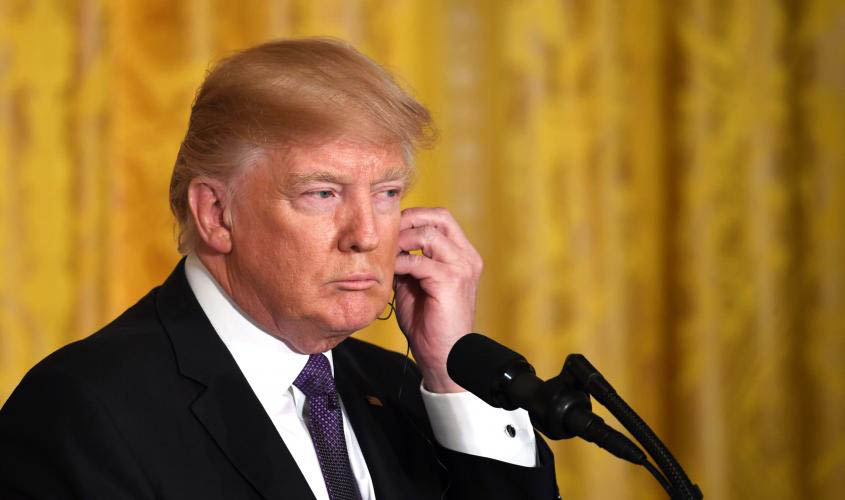 How is it possible that such a benign and beneficial economic system, which has raised the living standards of hundreds of millions across the world, could be in trouble? On both sides of the Atlantic, with the election of President Trump in the United States promising to put America First and Brexit in the United Kingdom, where many voters claimed sovereignty as their reason for voting to leave the European Union, it seems that the globalised economy is under assault. Why?
How is it possible that such a benign and beneficial economic system, which has raised the living standards of hundreds of millions across the world, could be in trouble? On both sides of the Atlantic, with the election of President Trump in the United States promising to put America First and Brexit in the United Kingdom, where many voters claimed sovereignty as their reason for voting to leave the European Union, it seems that the globalised economy is under assault. Why?
Globalisation became possible after the Second World War when a series of institutions were created, paving the way to facilitating world trade. The International Monetary Fund was formed at the Bretton Woods Conference in 1944, coming into existence a year later. The original 29 members has grown to 189, “working to foster global monetary cooperation, secure and promote financial stability, international trade and high employment around the world, at the same time reducing poverty”. Three years later, the European Recovery Programme (ERP), otherwise known as the Marshall Plan, kick-started the rebuilding of Europe after the devastation of the war. This generous aid programme contained conditions such as the lessening of interstate barriers and the dropping of many regulations. The ERP allowed the creation of the European Coal and Steel Community, the fore-runner of the European Union (EU) itself. A further institution, the World Bank, was formed in 1945 after Bretton Woods, with the twin goals of “ending extreme poverty and building shared prosperity”. Finally, in 1948 the all-important General Agreement on Tariffs and Trade, the fore-runner of the current World Trade Organisation (WTO), was signed by 23 nations in Geneva, with the purpose of “substantially reducing tariffs and other trade barriers and the elimination of preferences on a reciprocal and mutually advantageous basis”. The world now had a set of the rules of the game, which allowed globalisation to take off and it duly led to a stellar growth of exports around the world. At the same time, borders were coming down in the West, allowing the freedom of movement of people, goods, services and capital, thus promoting a greater efficiency in how resources could be allocated. Things began to move forward in the East, following Deng Xiaoping’s economic reforms in China in the 1980s. These reforms led to China joining the WTO in December 2001, when income levels there rose every decade, equivalent to every 50 years in the US, an epic transformation. Globalisation was making everyone better off, policymakers had mastered the big challenges of the global economy. So what has gone wrong?
At the turn of the millennium there was growing concern at the size of global capital flows arising from the relaxation of capital and exchange controls. For example, foreign holding of international capital as a share of the world’s activity had risen alarmingly from about 25% in 1980 to 200% in 2007, just before the global financial crisis of 2007-2008. All existing institutions were helpless in coping with the massive increase in cross border capital flow, so when the crisis hit them, banks were hugely exposed and required urgent support. There was a humungous crisis at the heart of financial capitalism and bewilderment as to the solution. Who should pick up the bill; debtor nations, creditor nations, bond holders, tax payers or shareholders? No-one knew. The net result was a succession of bankruptcies, a huge increase of unemployment and the widening of the gap between the rich and poor. Attitudes to globalisation began to change, following the crisis, although people gradually began to suspect that disappearing jobs and low, if any, growth in wages were now a permanent feature of the economic landscape. Something more than the financial crisis was happening, which had led to the fall in their living standards and they became angry at the lack of any meaningful policy response and apparent lack of concern among the elite. Globalisation became the whipping boy in their rejection of the old order, leading to demands of regaining ownership of their own destiny and the reassertion of sovereignty. Other factors, such as immigration and technological changes magnified these demands, but the stage was set for a struggle for a greater control over their lives. A poll in the Economist in November 2016 found that less than half of Americans, Britons and French believed that globalisation was a “force for good”. These pressures contributed to the election of Trump in the US and the vote by the British to leave the EU, with both Trump and Prime Minister Theresa May promising their electorates that future trade will be conducted in a bilateral, rather than a multilateral manner. Bilateral agreements are bad news for the global economy, as they tend to squeeze out the poorer developing nations.
So does this mean that globalisation has come to a halt? Fortunately for those believers in multilateralism, China may be coming to their rescue. With the US turning inward, with Trump withdrawing from the Trans-Pacific Partnership and pledging to re-negotiate the North American Free Trade Agreement, which he called the “worst trade deal maybe ever signed anywhere, but certainly ever signed in this country”, Beijing appears committed to preserving an open global system. Earlier this year at Davos, President Xi Jinping reaffirmed China’s commitment to globalisation, citing his sponsoring of numerous economic
John Dobson worked in UK Prime Minister John Major’s Office between 1995 and 1998 and is presently Chairman of the Plymouth University of the Third Age.

